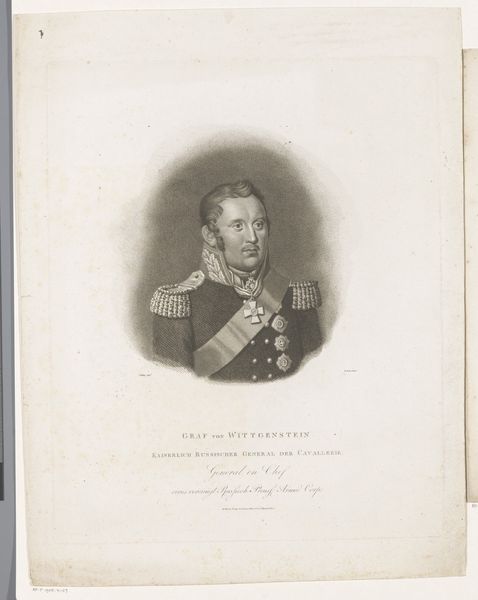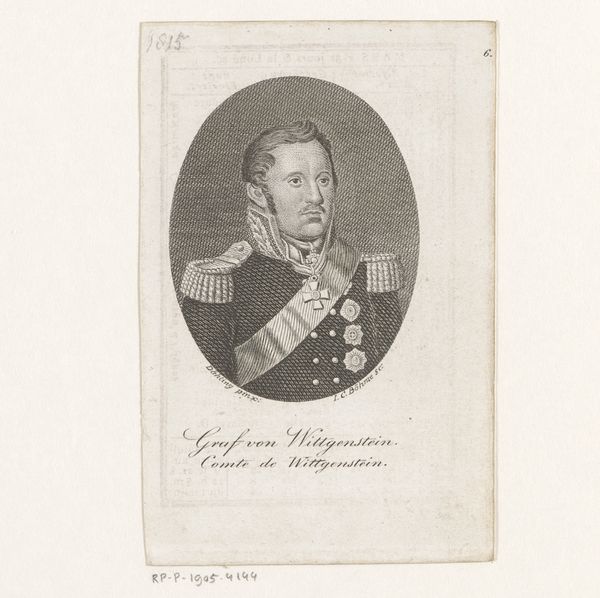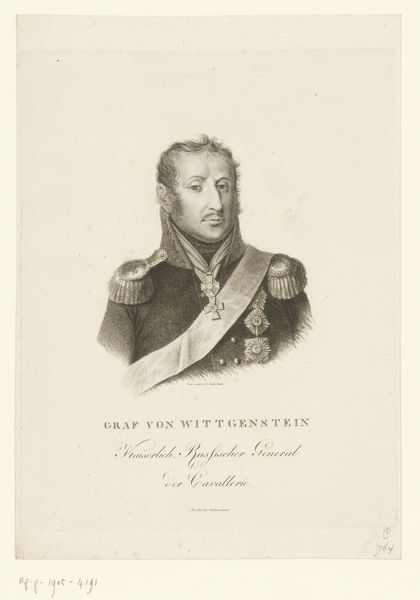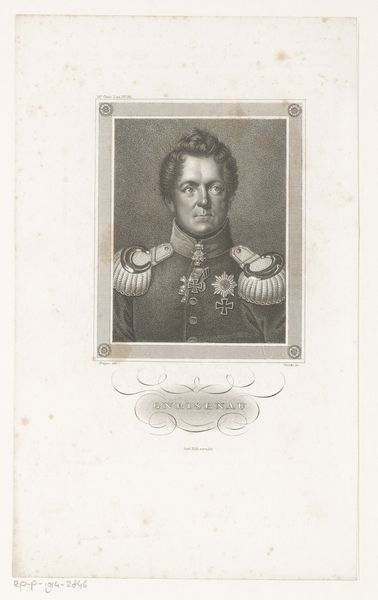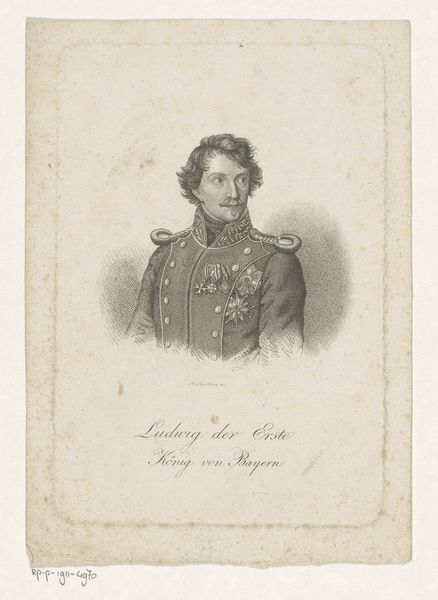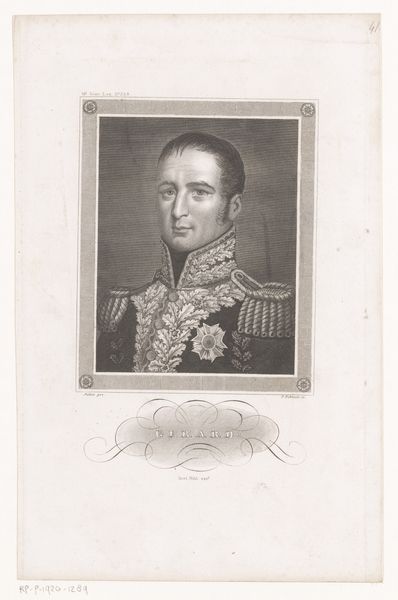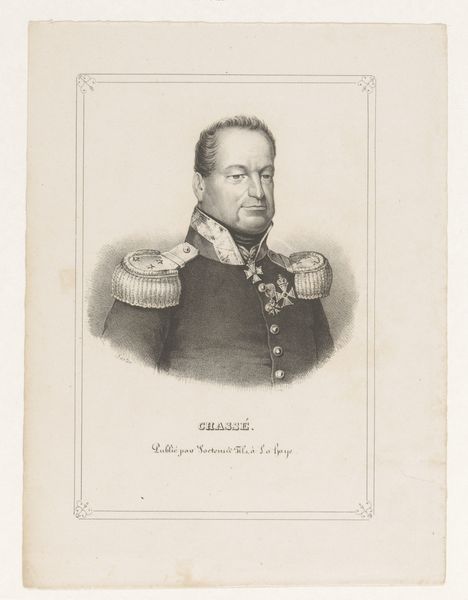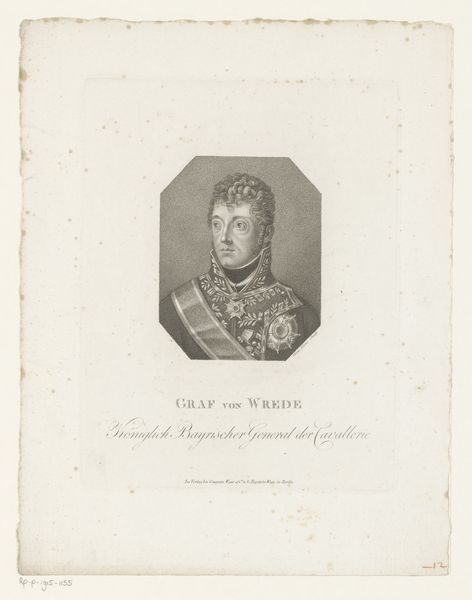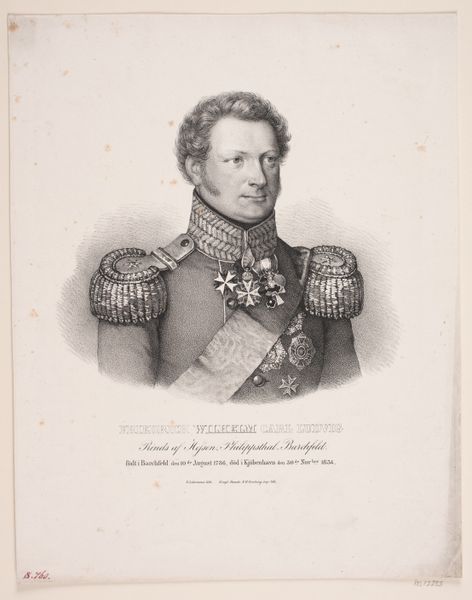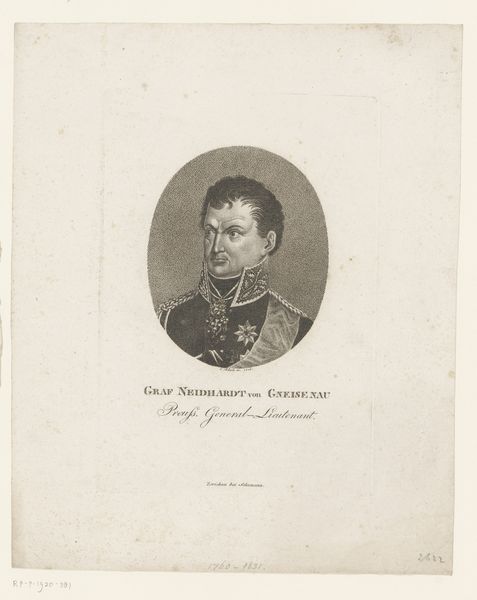
Portret van Ludwig Adolph Peter, Graf Wittgenstein 1813 - 1825
0:00
0:00
#
portrait
#
neoclacissism
# print
#
old engraving style
#
history-painting
Dimensions: height 205 mm, width 162 mm
Copyright: Rijks Museum: Open Domain
Curator: This is a print dating from between 1813 and 1825, now housed here at the Rijksmuseum. It's entitled "Portret van Ludwig Adolph Peter, Graf Wittgenstein." Editor: He has a stern, almost imposing look, doesn't he? The tight, controlled lines of the engraving create a rather severe impression. You immediately understand the subject's powerful status in this time period. Curator: Absolutely. The portrait depicts Ludwig Adolph Peter, Count Wittgenstein, a prominent figure in the Russian army during the Napoleonic Wars. Consider how Neoclassicism sought to emulate the art of classical antiquity, connecting ideas of civic virtue and social order with political leadership, as this portrait so effectively demonstrates. Editor: Yes, but look at the texture achieved despite it being a print. The layers of ink must’ve been applied with deliberate precision. There is this tactile, material presence. Even something like the metallic details on his uniform – all made by hand, engraving one line at a time, in this reproduction of aristocratic display. How might the working class at this time feel towards such objects and figures. Curator: I see your point about the materiality, yet that leads to other interesting aspects regarding its impact. This portrait becomes an object invested with identity, power and class. His dress and awards denote a position achieved because of systemic norms. The style adopted is more than simply representation: it’s social reinforcement through imagery. Editor: I suppose thinking of these reproductions then—circulating this image more broadly and consistently—may serve to create a wider cult of personality, which might only heighten issues with societal hierarchies. What purpose does art really serve if these factors are left unconsidered? Curator: I concur; the distribution and reproduction, typical of prints, allowed for the dissemination of power in visual form. In short, it reinforces social hierarchies, albeit in new, easily reproducible formats, just as you indicated earlier. Editor: It's really fascinating when you consider it beyond just image and artistry. Curator: Indeed, it pushes one to appreciate that beyond mere historical representation, prints can reinforce prevalent social, economical and political structures within societies.
Comments
No comments
Be the first to comment and join the conversation on the ultimate creative platform.
